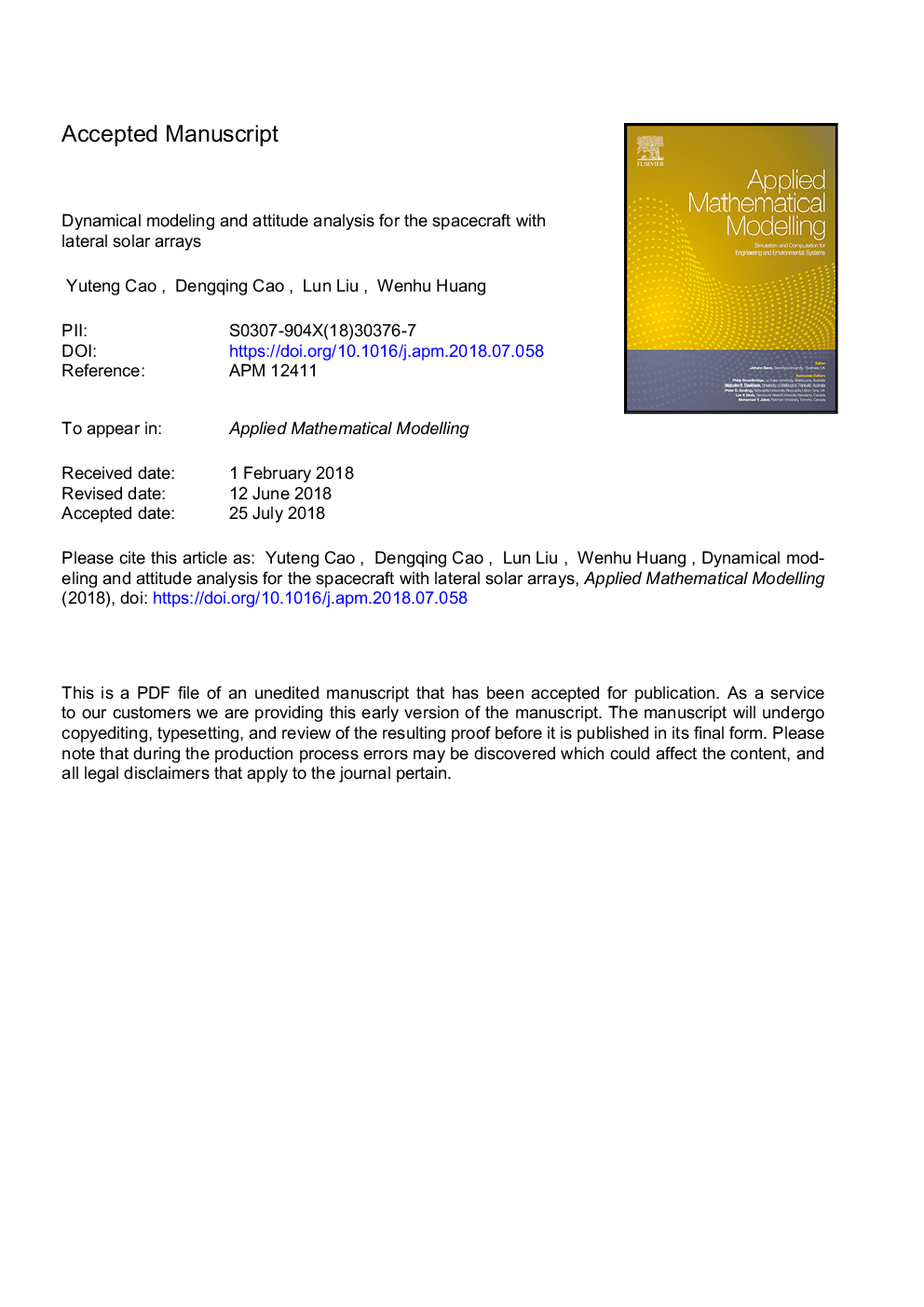| Article ID | Journal | Published Year | Pages | File Type |
|---|---|---|---|---|
| 11007227 | Applied Mathematical Modelling | 2018 | 34 Pages |
Abstract
The dynamics and attitude motion of the three-axis stabilized spacecraft installed with lateral solar arrays is investigated in terms of the rigid-flexible coupled global modes of the system. The spacecraft consists of a rigid platform with small moment of inertia and two groups of flexible solar arrays with relatively large moment of inertia installed on the rigid rotation shafts. The rigid-flexible coupled dynamic model of the spacecraft is established by using the Hamiltonian Principle. The global mode method is employed to work out the natural frequency and global modal shapes of the rigid-flexible coupled dynamic model combined with corresponding boundary conditions. To validate the effectiveness of the analytical results obtained by global mode method, the natural frequencies and mode shapes obtained from finite element model using MSC.Patran software are used as a reference. A numerical example is given to show that the results obtained from both methods are matched very well (the relative errors of the corresponding frequencies are small enough) and the rigid motion of the platform is coupled with the vibration mode of the flexible solar arrays. This implies that the global analytical modes can be used to accurately describe the rigid-flexible coupled motion of the spacecraft. By comparing with the finite element model, the reduced dynamical model derived in terms of the global modes of the system has a lower dimension. Numerical simulations for the system with variations of parameters and dynamic responses analysis for different applied forces are performed to illustrate that, the characteristics of the model are affected by inner and external factors.
Keywords
Related Topics
Physical Sciences and Engineering
Engineering
Computational Mechanics
Authors
Yuteng Cao, Dengqing Cao, Lun Liu, Wenhu Huang,
